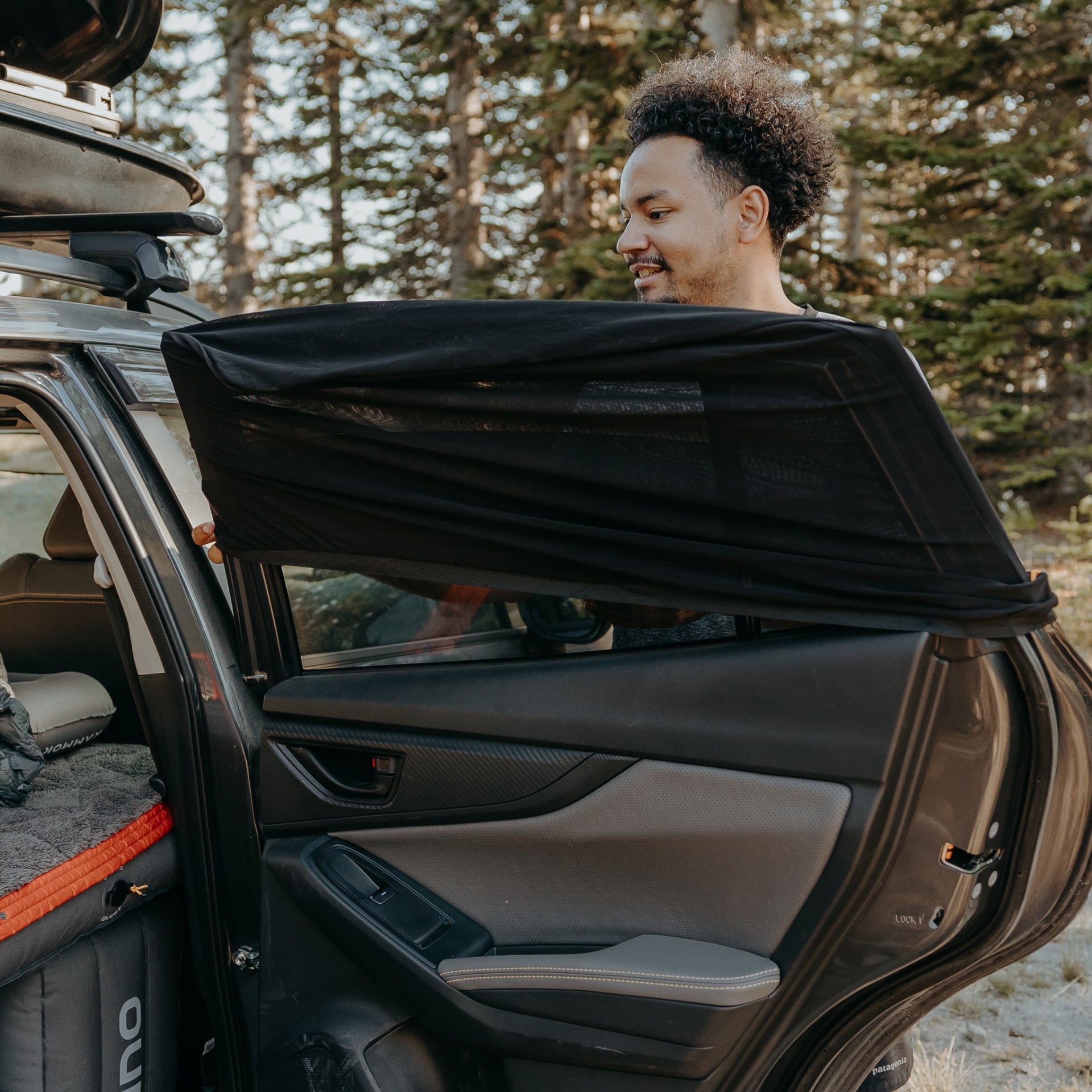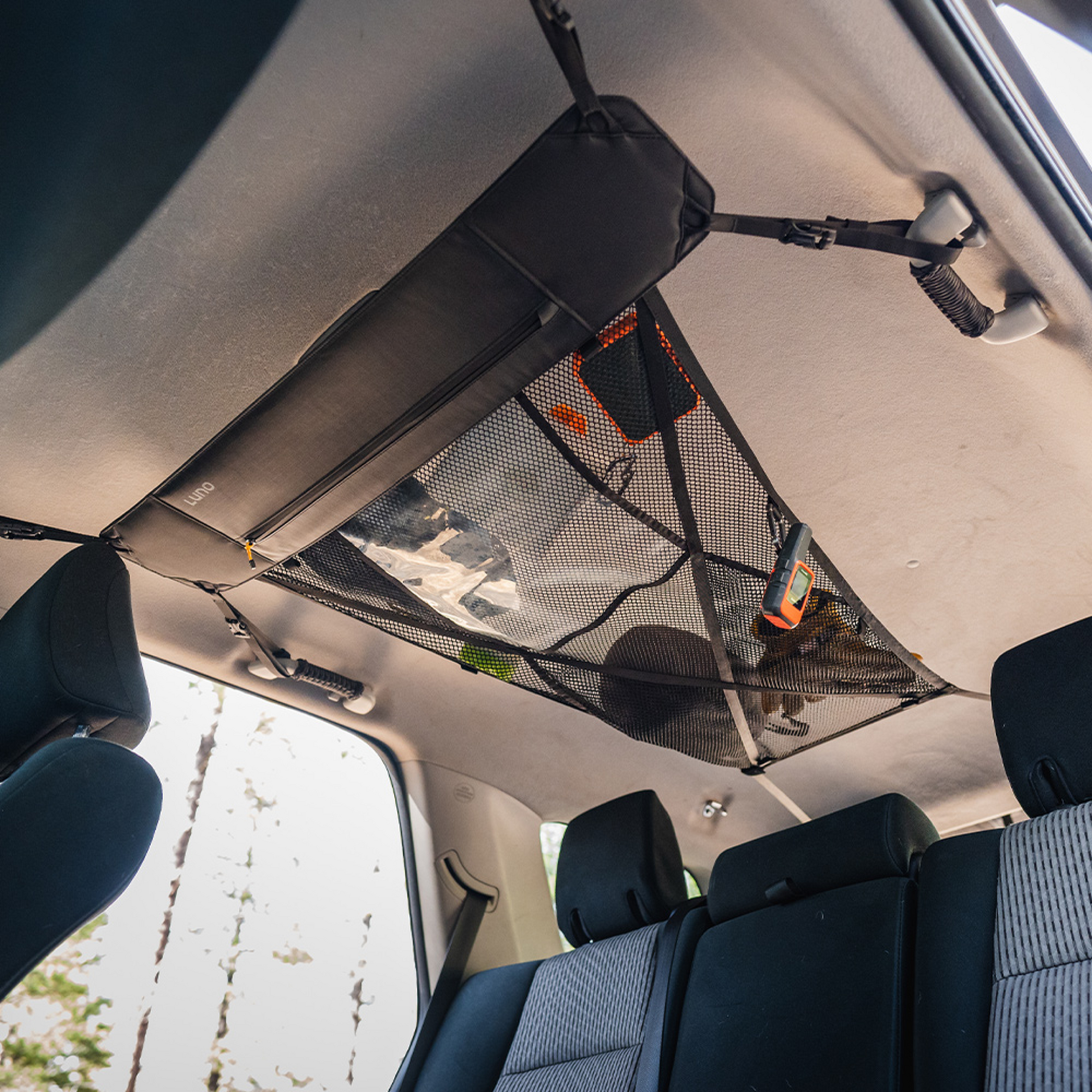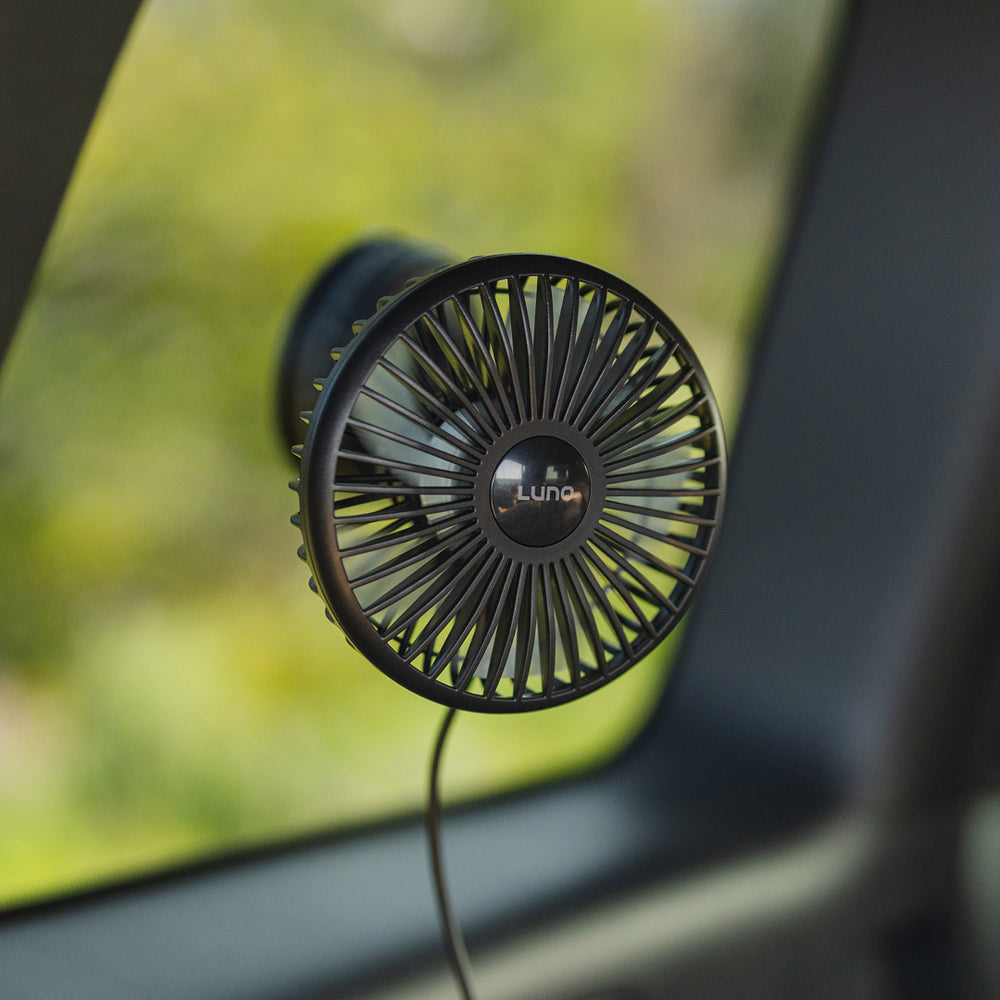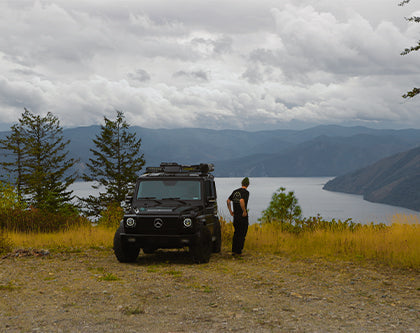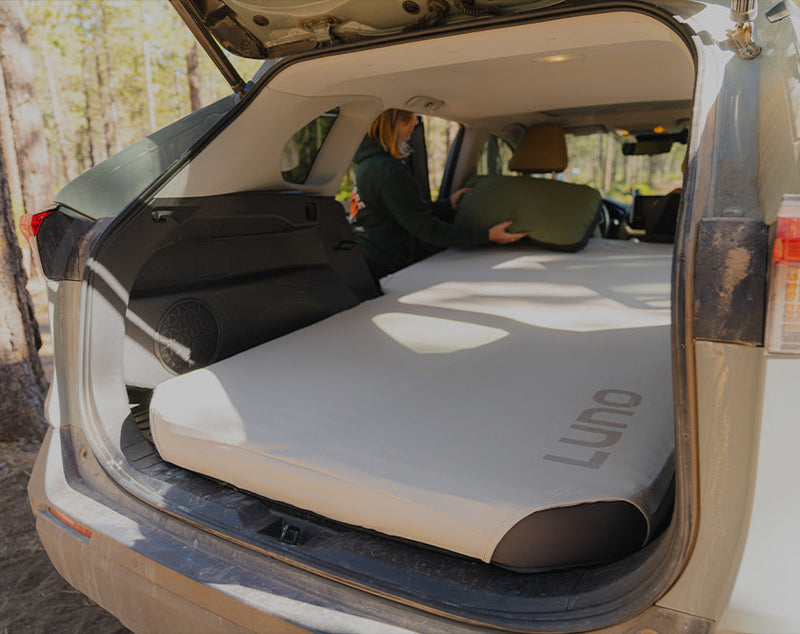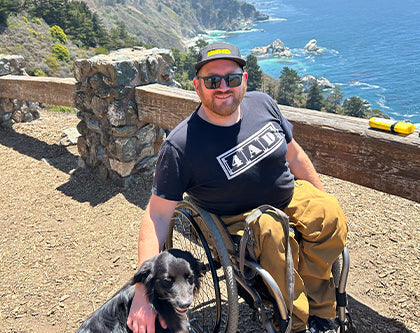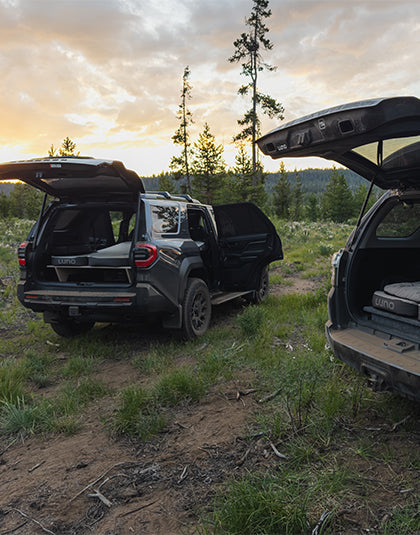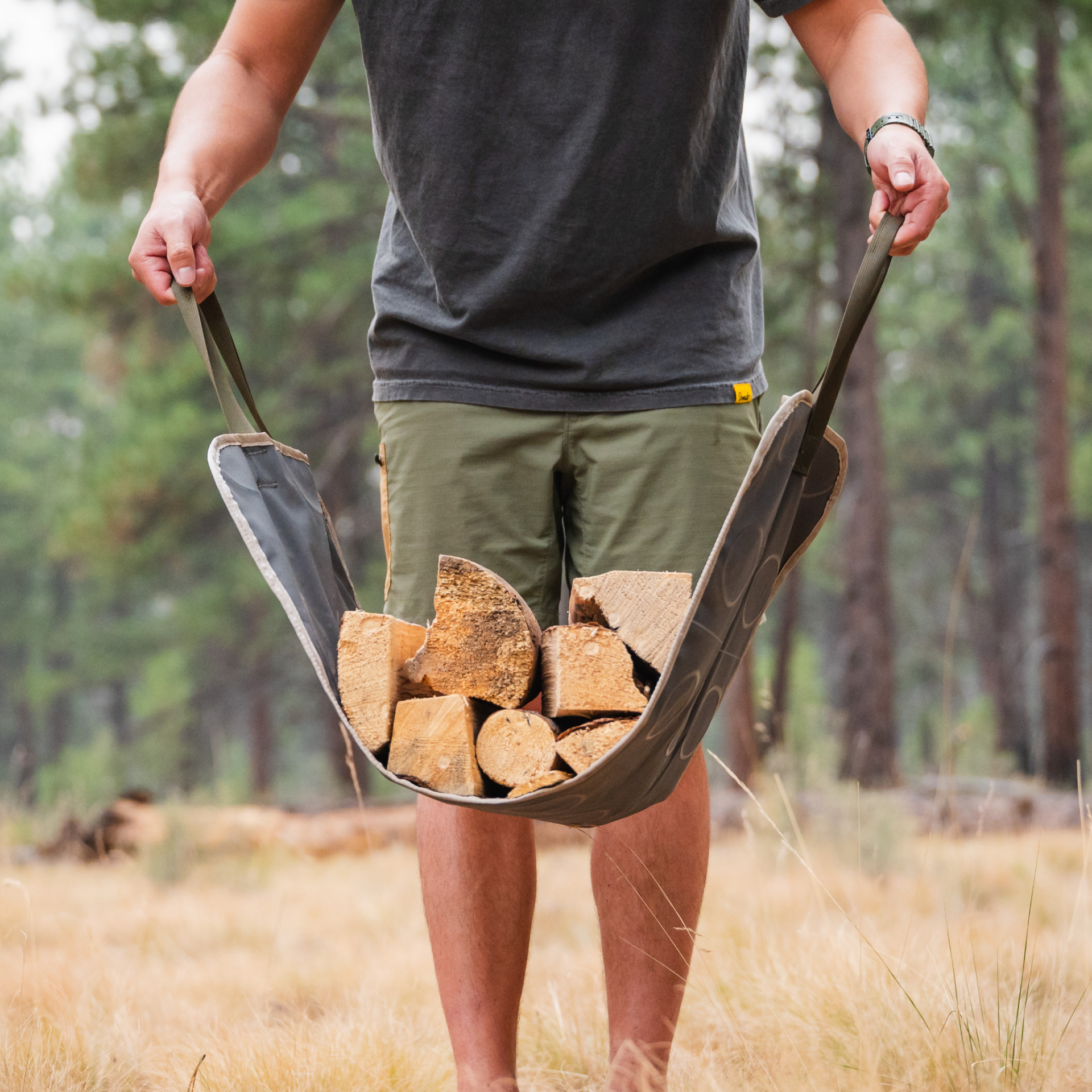
How to Car Camp on a Budget
Camping gear has never been more expensive–that’s just the truth. But just because it’s easy to spend a fortune on the latest and greatest camping equipment doesn’t mean it’s necessary to have a good time in the great outdoors. Whether you’re looking to try car camping for the first time without breaking the bank or simply hoping to curb excessive spending on your favorite hobby, this guide will help you save cash on your next adventure. We’ll break down everything from how to find free car camping, when and where to buy used gear, a few affordable gear recommendations, and more.
Long story short, we believe that the great outdoors should be accessible to campers regardless of budget. The tips and tricks below will help you car camp comfortably, regardless of your tax bracket.
How To Find Free Car Camping
One of the absolute best ways to save money while camping is to avoid paying for campsites. Private campgrounds can cost a pretty penny–we’ve seen fees upwards of $60 per night, at which point you might as well be paying for a cheap motel. Public campgrounds in popular National and State Parks aren’t much better, often costing campers $30+ per night. Not to mention, campgrounds at popular parks can fill up months in advance, making it challenging to plan a spur-of-the-moment road trip. That said, thrifty road trippers seek free camping whenever possible. Usually, that means avoiding National Parks and instead hunting for public lands that allow free camping.
Can I Camp on Bureau of Land Management (BLM) land or in National Forests and Grasslands?- You can camp for free for 14 days at a time, unless signage designates otherwise.
- Camping is often first-come, first-served, making it easier to head out on a spontaneous road trip.
- These wilderness areas are often extraordinarily beautiful, but less crowded than more famous National Parks.
- Visit the Bureau of Land Management website to find BLM land near you.
- Search for National Forest Land and Grasslands on the National Forest Service website.
- Use an app like iOverlander and search for free camping.
To learn more about BLM land and why we love it, check out our guide on the subject here.

While you will occasionally find developed campgrounds with amenities like pit toilets and fire rings on BLM land and in National Forests, most free camping is dispersed or primitive camping. Don’t expect to find firewood, potable water, or bathrooms–instead, plan to be self-sufficient. Also, be sure to familiarize yourself with Leave No Trace principles as well as the ins and outs of bathroom etiquette on public lands.
Tips and Tricks to Finding Free CampingFree car camping isn’t reserved for public lands. Smart car campers often stealth camp in quiet neighborhoods or snooze in Walmart parking lots–both free camping tricks that aren’t possible when you’re pitching a tent. For more tips and tricks on how to car camp for free, check out our Comprehensive Guide To Finding Free Car Camping.
Explore Your Backyard
This one’s a no-brainer, but car camping gets more expensive the further you drive. If you’re car camping on a budget, forget faraway destinations and explore wilderness areas and public lands closer to home. Backyard exploration is also less harmful to the environment and can provide a newfound appreciation for your local stomping grounds.
Buy Used Gear
Buying used gear is a smart way to save money when car camping, but it can also be an expensive mistake if you throw caution to the wind. Here are a few tips to keep in mind when on the hunt for used gear:
Where and How to Buy Used Camping GearGarage sales, mountain town thrift stores, and gear consignment shops are our favorite places to shop for used gear, as there’s nothing better than getting your hands on equipment before making a purchase. Online gear hubs like Facebook Marketplace, Craigslist, and even Nextdoor are also fantastic resources, as you’re generally able to check out gear in person before handing over cash. Sites like Geartrade that vet and price used gear are another smart pit stop.
When To Avoid Buying Used Gear- Safety Gear: Just because you can buy used doesn’t always mean you should. Buying used safety gear, like climbing ropes and avalanche safety beacons, is just not worth the risk.
- Sleeping Bags: We do prefer to buy new sleeping bags instead of used ones for hygienic reasons, but it’s not necessary to do so. If you do buy used, just be sure to inspect the sleeping bag before purchasing (if it’s not from a legitimate site like Geartrade) and wash with care.
- Stoves, Headlamps, and More: Buying a used stove or headlamp is a smart play, but only if you can take it for a test drive before purchasing.
- Inspect Gear Closely: We’ve mentioned this already, but we can’t stress enough how important it is to inspect used gear, as you won’t find great return policies at garage sales or on Craigslist. Look for obvious flaws, signs of heavy wear and tear, missing components, etc.
- Bargain: Don’t be afraid to haggle! If you’re buying gear from a garage sale, Craigslist, or Facebook Marketplace, oftentimes folks are just happy to get rid of whatever it is they’re selling.
- Just Because It’s a Good Deal Doesn’t Mean You Need It! This is the advice that many gear hoarders need to hear… Just because you find a smokin’ deal on a used car camping doodad doesn’t mean you actually need it. If you’re on a budget, drum up a shopping list before you shop and stick to your list!
Invest In Mission-Critical Gear
Shopping for cheap gear is a natural inclination for car campers on a budget, and it can be a smart decision–depending on the gear. However, oftentimes cheap price tags reflect shortcomings in the durability department, and that gear fails sooner than not. There’s something to be said about investing in high-quality, durable gear that will last decades instead of days. Buy cheap, buy twice, as the saying goes.
This might mean buying a genuine Swiss Army Knife with a lifetime warranty instead of a cut-rate knock-off. Ponying up for a quality cast-iron pan for camp cooking that’ll last a lifetime instead of a cheap non-stick one that’ll scratch and warp in a few years. Or, in Luno’s case, investing in a rugged car camping mattress that’s purpose-built for life on the backroads. While buying quality gear isn’t the cheapest decision up front, it’s often the best financial play long term.
Plus, for car campers, investing in a Luno sleep setup is investing in a good night’s sleep. We want you to make the most of your adventures, and nothing ruins a camping trip like a stiff back or a sleepless night. If you like snoozing soundly as much as we do, chances are an investment in one of our mattresses will pay dividends for years to come.
Ditch the Tent
Cost is one of many reasons why we prefer car camping over tent camping. After all, when you sleep in your vehicle, there’s no need for a tent, one of the priciest items on any camping packing list. With a Luno Air Mattress, you can snooze soundly in your SUV or hatchback. We also have mattresses for truck beds, too!
Stay Warm for Cheap
There are many ways to stay warm and cozy in your car without buying expensive camping gear. Here are a few of our favorites:
- The Nalgene Hot Water Bottle Hack: One of the easiest ways to warm up on the road is to fill your Nalgene up with boiling or hot water and place it inside your sleeping bag or sheets. By the time you’re ready to crash, your bed will be preheated to perfection.
- Avoid Condensation: Condensation is every car camper’s nemesis, as a damp, wet rig translates to a tough night’s sleep. Keep the windows cracked to improve airflow and reduce the chances of condensation. Additionally, we like to keep an old rag or towel on hand to mop up condensation as soon as it forms on windows, which will help keep your bedding dry.
- Layer Like a Pro: Staying comfortable while camping often comes down to what you’re wearing. A simple, three-step layering system will help you stay warm, dry, and cozy, no matter the weather.
- Start with a warm, moisture-wicking base layer–we like natural fibers like merino wool, or synthetic ones like polyester or nylon.
- If it’s extra chilly, stay insulated with a puffy jacket.
- If it’s wet, finalize your kit with a waterproof shell to stay dry.
While new outdoor apparel can be extremely pricey, you’ll often find great deals on used apparel online and at gear consignment shops and thrift stores! We highly recommend shopping used in this department.
- Camp In Comfort With Your Favorite Comforter: If you’re new to camping and don’t have a sleeping bag yet, no worries. Just wrangle up some sheets, your favorite comforter, and some extra blankets. One of the beautiful aspects of car camping is that you aren’t sleeping in the dirt or transferring your gear to a tent, enabling you to keep your bedding clean. While we suggest eventually getting a sleeping bag or camping quilt–they’re better at handling moisture and the rigors of adventure–there’s nothing wrong with starting with a cheap and easy comforter setup.
Looking for more cold-weather car camping tips? Read our Top 10 Tricks to Sleep Warm for more advice.
Raid Your Kitchen
Take a look around your own kitchen before you head to the gear shop. Because you’re car camping and not backpacking, you don’t need an ultralight cooking setup. Grab a plastic tub or a milk crate and create an on-the-go kitchen kit with old knives, cutlery, pots, and pans. Don’t have anything at home you’re ready to take on the road? Visit your local Goodwill, thrift store, or dollar store to scout out cheap, reliable options.

The same mindset can be helpful when it comes to meal prep, too. Poke through your own fridge and pantry first before hitting the grocery store. Also, forget the expensive dehydrated meals–grab simple, cheap, and healthy ingredients and whip up affordable, nutritious meals on the road. Not sure what to make? Check out these Luno-approved 5 one-pot wonders.
Build Your Car Camping Kit Bit By Bit
One of the main mistakes new car campers make is thinking that they have to buy all of the gear at once, and that’s just not the case. It’s possible to pull together the bare essentials, grab stand-ins you have lying around the house, and MacGyver a workable car camping setup. Throughout the process, triage accordingly. Focus on acquiring the gear you truly need first, then spruce up your kit with the gear you want down the line. Purchasing gear bit by bit makes the entire process much easier on the wallet and the mind.
Budget-Friendly Car Camping Gear
Not all budget-friendly gear is reliable, but there are actually more decent options on the market than you might think. Here are a few of our top recommendations for economical camping gear:
- Coleman Camping Stoves — Coleman propane camp stoves are affordable, reliable, remarkably durable, and easy to use. This two-burner is currently available for under $50.
- Coleman Coolers — While we love ourselves a Yeti, these Coleman Coolers get the job done just fine for a fraction of the price.
- Black Diamond Headlamps — This Black Diamond Astro Headlamp doesn’t have any bells and whistles, but it’s reliable, easy to use, and just under $20.
- REI Co-Op Camp Furniture, Sleeping Bags, and More — When in doubt, stop by REI’s Co-Op store. The gear shop’s in-house brand is affordable, practical, and trustworthy. We’re big fans of their camp chairs, sleeping bags, camp kitchen essentials, and more.
- Aqua-Tainer — If you’re dispersed camping on public lands, carrying your own water supply is critical. Forget buying water jugs at the gas station and start packing water from home. This Aqua-Tainer holds 7 gallons of water and has a screw-on vent and spigot perfect for filling up smaller water bottles and washing dishes.
Remember What It’s All About
Car camping, at least to us, is about freedom, exploration, and adventure. It’s about sharing good times with better people. While having the right gear can certainly help make your car camping experience more enjoyable, a tight budget needn’t keep you from enjoying the great outdoors. We hope these tips and tricks help you get creative, re-think gear acquisition and trip prep, and car camp with confidence.
Thanks for reading, and we’ll see you on the road.
The Luno Crew

